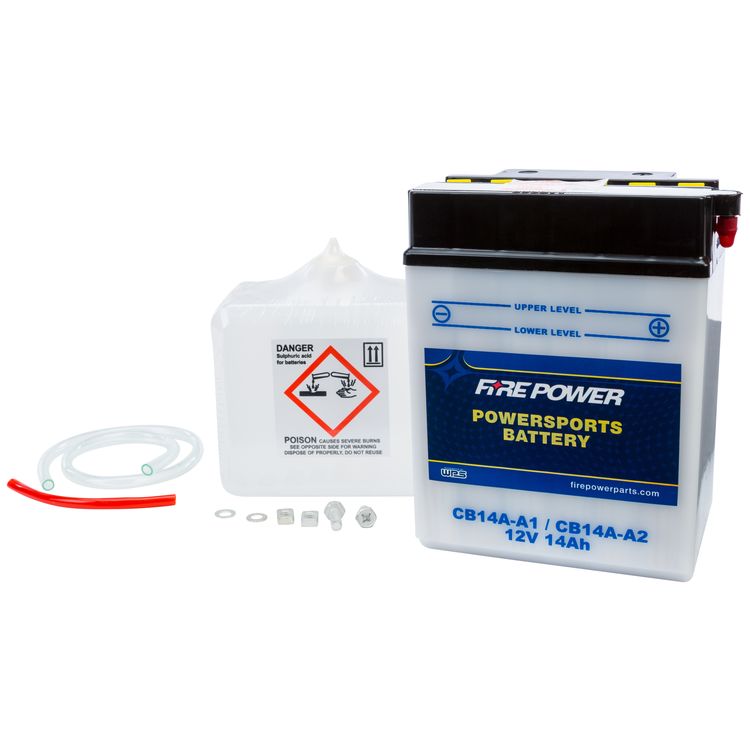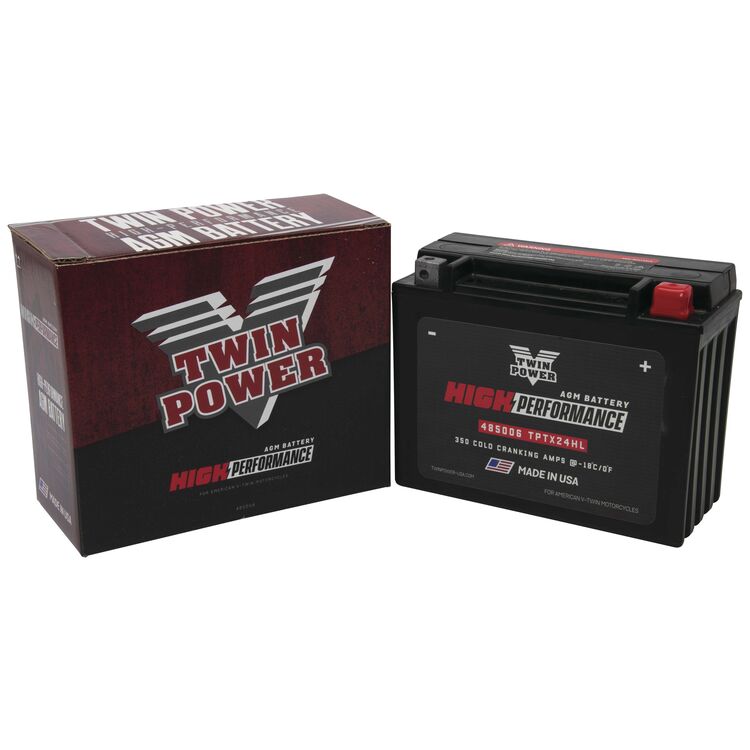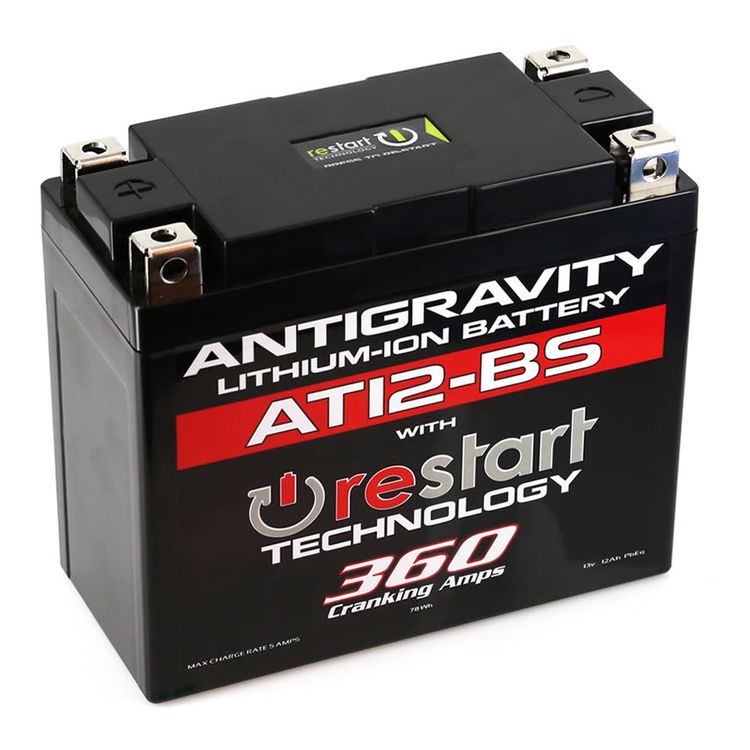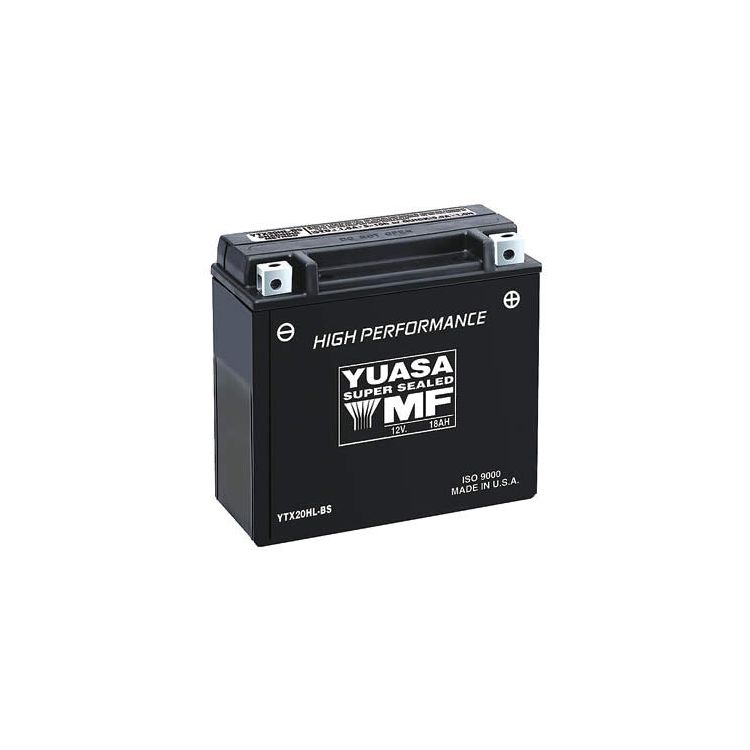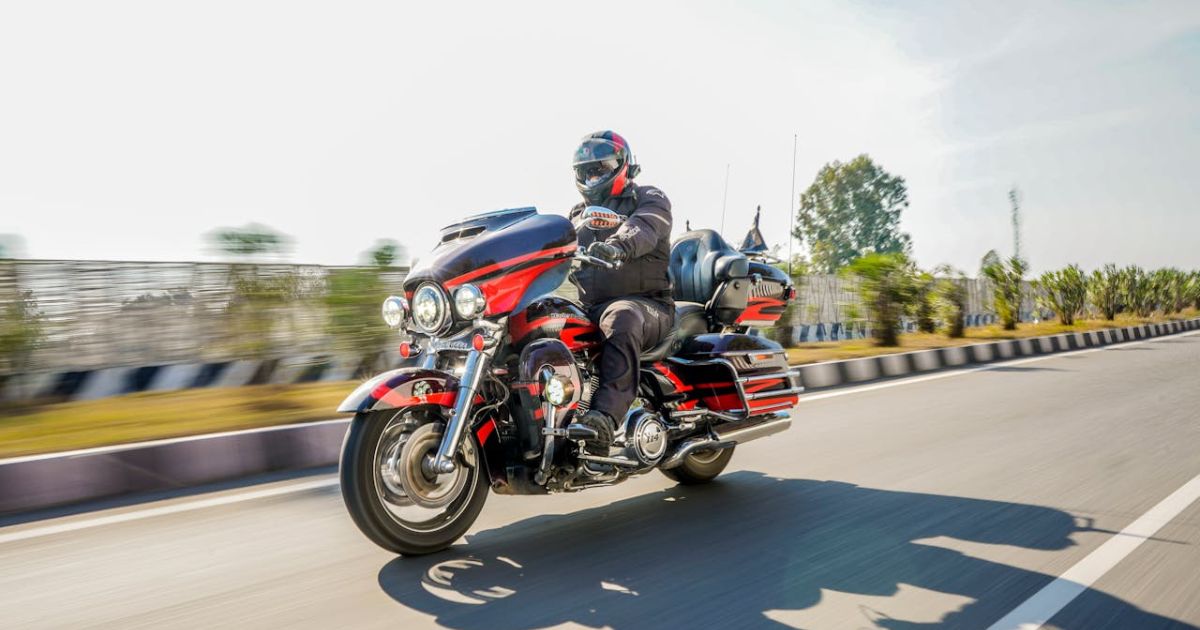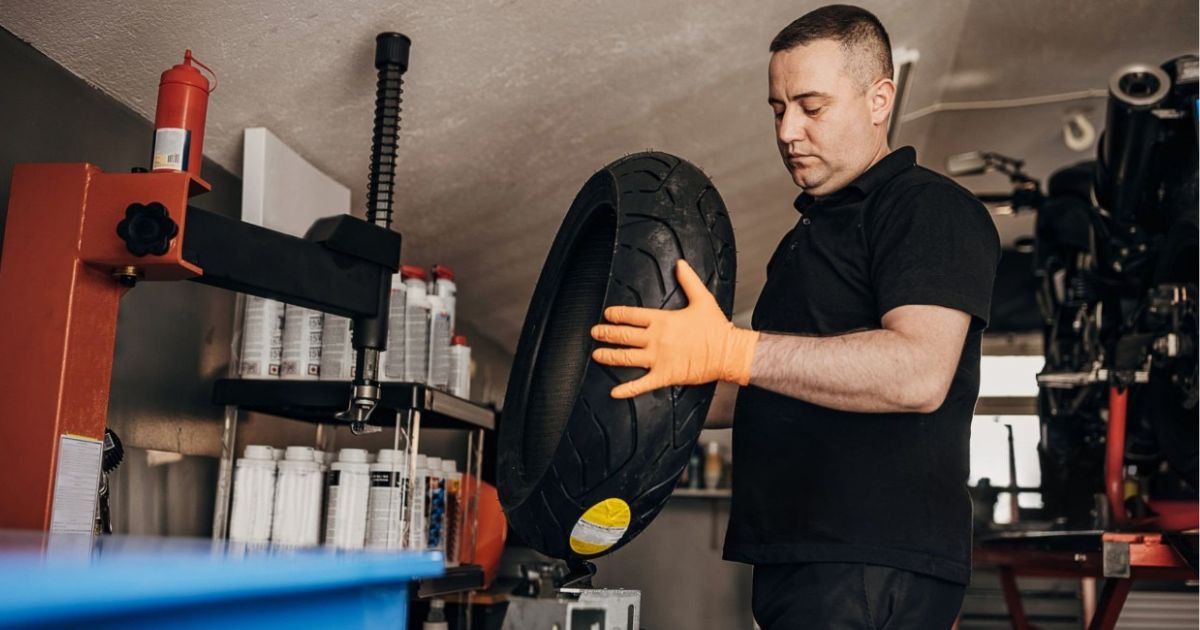
Best Motorcycle Battery for Your Bike: Conventional, AGM & Lithium
left for contents
The battery isn’t the flashiest part of your bike, but screw it up and you’ll sure as hell remember where it’s hiding, usually while you’re stuck on the side of the road watching your crew ride off into the sunset.
Picking the right battery isn’t just about getting your bike to fire up. It’s about not having to think about it at all. Nail it, and you’re rolling without a second thought. Blow it, and you’re chasing jump starts and missing rides.
A few things riders don’t always hear straight:
- That fancy lithium setup everyone brags about hates the cold worse than you do.
- Your battery tender might be slowly roasting your lithium battery alive if it’s not the right type.
- Sticking to whatever battery your bike came with isn’t always the smartest move if you actually want better reliability.

Let’s get straight to it. Here’s what you need to know to match your battery to your ride and keep you riding, not pushing.
Here are your top options for motorcycle batteries:
Top Pick: Best Motorcycle Battery
Affordable and basic, these are best for wrenchers and vintage fans who need a standard battery.
An AGM battery that’s factory-activated, best for commuters, tourers, ADV, and everyday riders.
A very light lithium Ion battery with built-in re-start feature. Best for racers and tuners who want to get the most out of their bike (and shave every ounce off).
Which Battery Fits Your Ride?
Conventional Lead-Acid (Flooded): Old-school and cheap up front, but they need babysitting. Checking electrolyte levels, topping off, the whole deal. Good for riders tight on cash, vintage bike owners, or anyone who doesn’t mind getting their hands dirty.

AGM (Absorbed Glass Mat): The workhorse. Sealed, spill-proof, and tough enough to handle everyday riding. No maintenance headaches. Solid call for commuters, tourers, ADV riders, most everyday setups.
Lithium Iron Phosphate (LiFePO4): Featherweight hitters. Way lighter, strong cranking power, crazy long lifespan if you treat ’em right. But they cost more and need specific chargers. Best for performance junkies, track rats, and custom builders who count every ounce.
Best Motorcycle Batteries Reviewed
Here’s a lineup of batteries that actually deliver solid performance, whether you are looking to save some cash or step up to top-shelf gear. Good options, straight to the point, to get you rolling and keep you riding without headaches.
Fire Power Conventional Battery
I ran a Fire Power Conventional Battery on one of my older bikes when I needed a quick replacement and didn’t want to drop a bunch of cash. It’s your classic lead-acid setup, which means you have to fill it with acid when you get it and check the fluid levels regularly. Not the easiest thing out there, but if you don’t mind a little hands-on upkeep, it’ll keep your bike turning over.
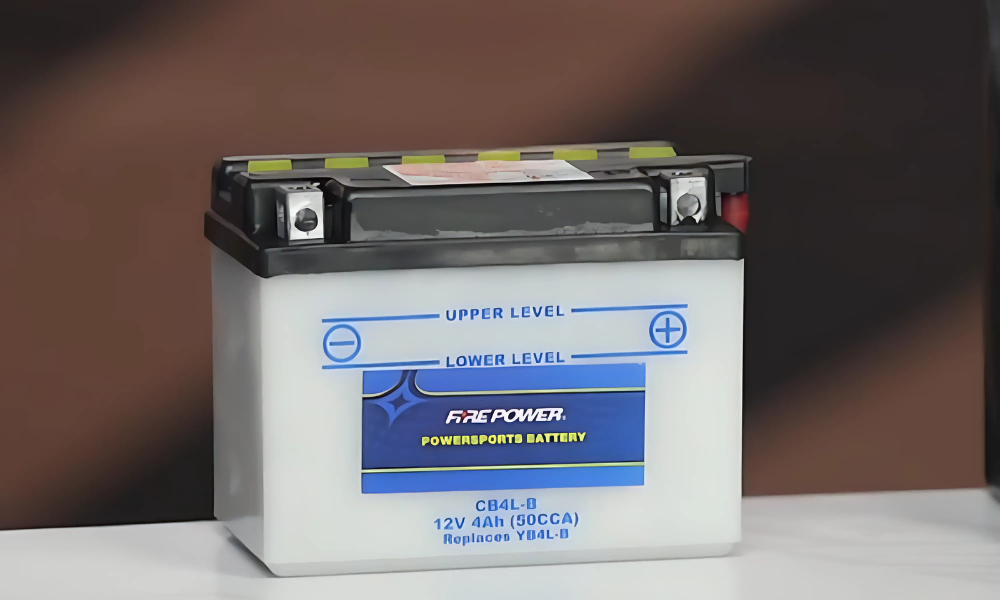
The case is made from polypropylene, which handles vibration better than some of the cheaper stuff. I’ve had it on rough roads and bumpy commutes, and it didn’t crack or leak. It’s also got anti-sulfation treatment, which helps keep the plates from breaking down too fast if you’re not riding every day. Still, it’s the kind of battery that’ll last a season or two if you treat it right, maybe longer if you’re religious with maintenance.
Cranking power felt solid, nothing fancy, but it fired up the engine consistently. You’re not getting high-end performance or a long lifespan like with AGM or lithium options, but that’s not what this battery’s trying to be.
If you’re on a tight budget, ride a vintage setup, or just need something to hold you over for a while, Fire Power gets the job done — as long as you’re down to put in a little work.
The catch? The maintenance requirement, the potential for acid spills if tipped, and generally lower CCA and shorter lifespan compared to premium AGM or lithium options. They also tend to be heavier.
Silver Lining: The low cost makes it a great option for project bikes, older machines where authenticity matters, or simply riders on a very tight budget who need reliable starting power and understand the maintenance involved. Sometimes, simple and cheap is all you need.
Alternative option: If you are looking for a conventional battery, you may also check out the BikeMaster BB30L-B Battery. It handles starting duties without drama, holds up to everyday riding, and keeps things simple.
Reliable power with a durable build for tough motorcycle conditions.
- Tough polypropylene case resists harsh environments
- Anti-sulfate treatment extends battery life
- Includes pre-measured acid pack for easy setup
- Requires manual acid fill and initial charging before use
Our Review: We’ll be covering the Fire Power Conventional battery in our budget gear roundups at It’s Better On The Road.
Twin Power High Performance Factory Activated AGM Battery
If you ride a Harley and want a battery that keeps up without turning into a project, Twin Power’s High Performance AGM is worth a look. It comes factory-activated, which means no acid fills, no waiting around. Just bolt it in and ride.
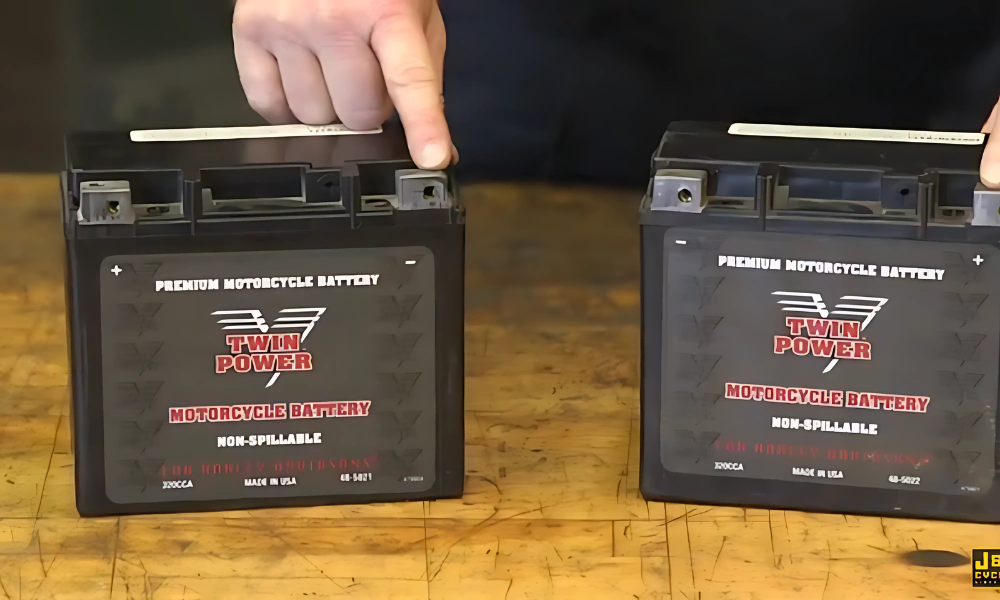
It’s an AGM battery, so it’s sealed and maintenance-free. You don’t have to worry about spills, corrosion, or topping off fluid. That’s key when your bike shakes like a paint mixer at idle. Twin Power built this thing to handle the vibration and heat that comes with a big V-twin, especially when you’re racking up miles in all kinds of weather.
Cranking power is solid across the board. It’s made to turn over heavy Harley motors without hesitation, and the charge holds up well even if the bike sits for a bit. No fancy bells and whistles, just a strong, dependable battery that does exactly what it’s supposed to.
I wouldn’t call it a premium battery, and it’s not trying to be. But it’s tough, reliable, and gets the job done without the price tag some of the bigger brands ask for. If you’re after a battery that can handle daily rides and long trips without falling apart, Twin Power delivers. And, it’s made in the USA.
The catch? The main downside with the Twin Power AGM is lifespan. Some of these batteries hold up fine, but others start fading after a year or two, which is shorter than what you’d expect from a solid AGM. It cranks strong at first, but if you’re expecting long-haul reliability like you’d get from a top-tier brand, this one might fall short.
Alternative Option: If you don’t mind the initial filling and charging process and want to save a few bucks, the Yuasa YTX12-BS AGM (or other non-activated AGMs) offers similar core performance once it’s prepped and ready to go.
Premium performance battery built tough for Harley riders.
- Factory activated and fully sealed for convenience
- Extreme vibration resistance enhances durability
- Heavy-duty terminals ensure strong and stable connections
- Higher price point compared to standard battery options
Our Review: Check back soon at It’s Better On The Road for our full thoughts on the Twin Power Factory Activated AGM!
Yuasa High Performance AGM Battery
The Yuasa High Performance AGM is one of those batteries you throw in and stop thinking about. It comes factory-activated, so there’s no filling or messing with acid. You bolt it up, and you’re ready to ride. No drama, no leaks, no maintenance checks down the road.
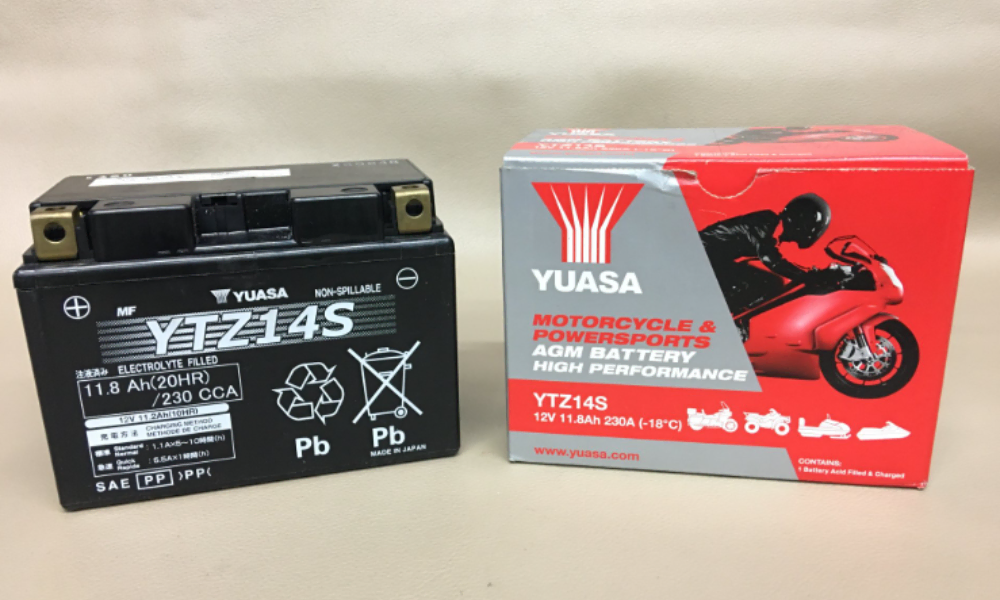
It cranks harder than your standard AGM too. That extra kick matters if you’re running a big twin, loaded up with accessories, or just riding in colder weather when engines get stubborn. The tech inside is lead-calcium, which basically means it holds a charge better over time without the usual slow death you get from sitting too long between rides.
What I like is that it is built tough without making a big fuss about it. Vibration, heat, cold — it can handle real-world riding. You will find cheaper batteries out there, but you usually pay for it in headaches later. Yuasa charges a little more, but you are buying peace of mind.
If you want a battery you can slap in and not have to think about every few months, this is the move. Reliable, strong, and built for riders who would rather be riding than wrenching.
The catch? Well, it’s not the lightest option out there, weighing significantly more than a lithium battery. If you’re building a featherweight race replica, this isn’t your first choice.
Silver Lining: That extra weight comes from proven, robust lead-acid technology that offers fantastic reliability and durability for everyday riding, touring, and commuting. It’s a known quantity that just plain works, year after year, without needing a special charger or sensitive handling like some lithium options.
Alternative option: The Fire Power Factory Activated AGM Battery comes pre-charged, holds up well to everyday riding, and gives you reliable starting power without the premium price tag. A good pick if you want something dependable and easy to drop in.
Reliable high-performance AGM battery designed for powerful starts and long-lasting use.
- Up to 30 percent more cranking amps for superior starting power
- Maintenance-free and spill-proof design for hassle-free use
- Long shelf life with low self-discharge during storage
- Requires initial acid fill and charging before use
Our Review: We haven’t done a specific deep-dive review on the Yuasa High Performance AGM yet, but stay tuned to It’s Better On The Road!
Antigravity ReStart Lithium Ion Battery
If you want to drop some real weight off your bike and add a bit of tech without making it complicated, the Antigravity ReStart is a pretty slick option. It is a lithium-ion setup, so it is way lighter than any lead-acid or AGM battery I have used. You can feel the difference even just holding it, never mind when you are riding.
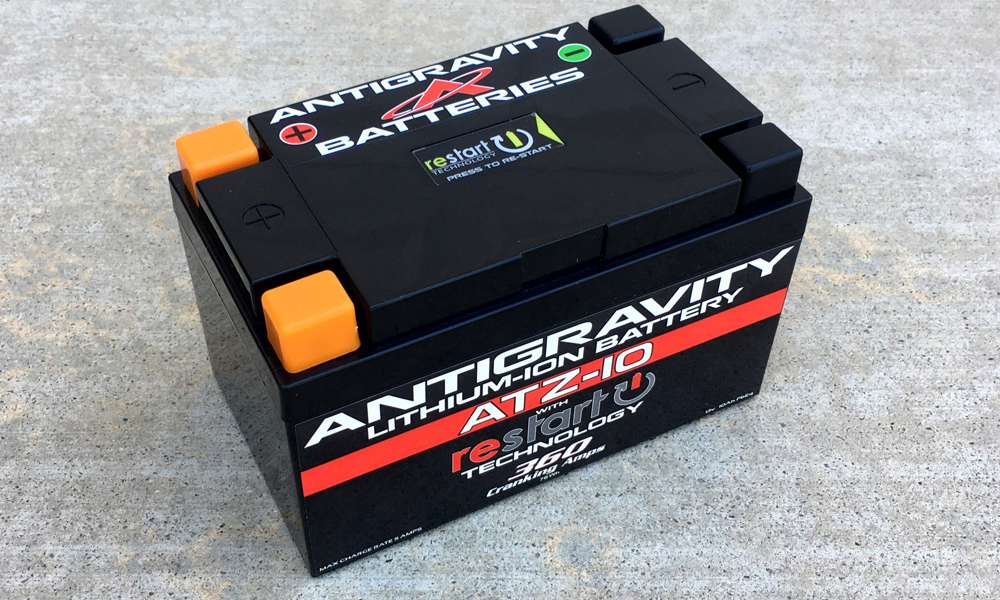
What really sold me on it is the built-in jump-start feature. If you accidentally kill the battery — like leaving the ignition on or running accessories too long — you hit a button and it taps into a backup reserve to fire the bike up. No jumper cables, no waiting around, you just get moving again. That is huge if you ride solo a lot.
It installs just like any other battery, but you do have to make sure your bike’s charging system is lithium-friendly. Some older bikes might need a little tweaking or a compatible regulator to keep from overcharging it.
It costs more up front, no way around that. But between the weight savings, the backup start, and not worrying about being stuck somewhere dumb, it feels like money well spent to me.
The catch? These are premium batteries with a premium cost. They also absolutely require a lithium-specific charger (LiFePO4 compatible) – using a standard lead-acid charger can damage them permanently. Lithium batteries can also be more sensitive to extreme cold than AGM batteries, sometimes needing a “wake-up” (like turning the headlight on for 30 seconds) before they deliver full power in freezing temps.
Silver Lining: That Re-Start feature can genuinely save you from being stranded far from home, potentially saving you the cost and hassle of a tow or roadside assistance. For adventure riders or anyone traveling remotely, that peace of mind can be worth the price of admission.
Alternative option: The Duraboost DBL14 Lithium Ion Battery is a good pick if you want reliable starts and a simple setup that just works. It is lightweight, cranks hard, and gives you strong performance without getting into crazy prices.
Smart lithium-ion battery with built-in jump-start technology for worry-free rides.
- Built-in Re-Start button prevents dead battery emergencies
- Weighs up to 70 percent less than lead-acid batteries
- Advanced Battery Management System ensures safety and extended life
- May not be compatible with older or damaged voltage regulators
Our Review: We’re big fans of innovation like the Re-Start feature. Look for our detailed review of the Antigravity ReStart soon on It’s Better On The Road.
Duraboost V-Twin Lithium Ion Battery For Harley
If I wanted to drop some weight and get stronger starting power out of my Harley, the Duraboost V-Twin Lithium Ion Battery would be on my radar. It is a lot lighter than a standard lead-acid battery, and that weight savings can make a real difference when you are loading up for a long haul or hitting apexes.
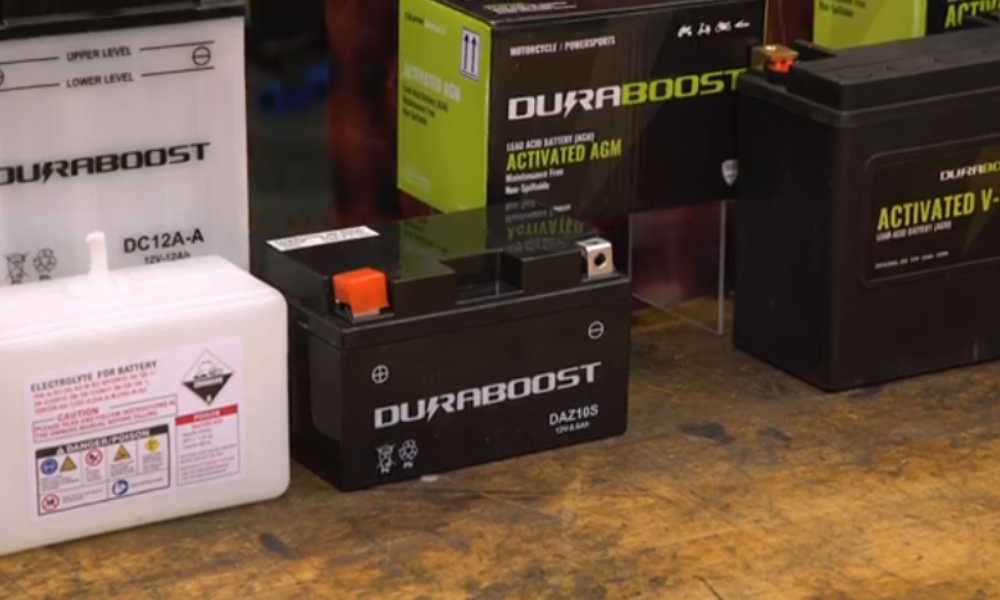
Installation is straightforward. The battery comes in a heavy-duty OEM-sized case, so it fits snug without needing any weird spacers or foam tricks. The brass two-position terminals make it easy to get your cables locked down tight.
Performance-wise, it delivers solid cranking power and a strong cycle life, meaning it can handle getting charged and discharged over and over without falling apart. Built-in protection for over-discharge and short circuits is another bonus, especially if you are running extra gear or doing longer rides.
Just remember it needs a lithium-specific charger. Hooking it up to a regular lead-acid tender can mess it up fast. Also, like a lot of lithium setups, it can be a little sluggish on cold mornings until it warms up.
If you are after a lighter, tougher battery with some brains built in, the Duraboost V-Twin is a strong choice for Harley riders looking to upgrade.
The catch? Price is higher than AGM/conventional. Also, it’s the usual story with lithium: you have to use a lithium-specific charger or you risk wrecking it. It can also get a little slow to wake up if you are trying to fire it up in really cold weather. Other than that, it is a solid upgrade if you know how to take care of it.
Silver Lining: You get a battery that is lighter, cranks harder, and lasts longer if you treat it right. The built-in protection makes it a lot tougher than some of the older lithium options out there. Get the right charger and you are set for reliable starts without dragging extra weight around.
Alternative option: If you want another lightweight option with a little more brand reputation behind it, the Antigravity ReStart batteries are worth a look. They are tough, crank strong, and have that built-in jump-start feature if you kill the battery out on the road.
Power-packed lithium-ion battery designed specifically for Harley V-Twin motorcycles.
- Delivers exceptional cranking power for high-performance engines
- Equipped with over-discharge and short-circuit protection
- Lightweight and vibration-resistant for long-term durability
- Not compatible with international shipping restrictions
Our Review: We’re planning a tech dive into lithium battery management systems, featuring the Duraboost V-Twin. Check It’s Better On The Road for updates.
Motorcycle Battery Comparison
| Feature | Fire Power Conven. | Twin Power Act. AGM | Antigravity ReStart | Yuasa High Perf. AGM | Duraboost V-Twin Lithium Ion |
| Type | Conventional | AGM | Lithium Ion | AGM | Lithium Ion |
| Maintenance | Periodic Filling | None | None | None | None |
| Weight | Heaviest | Heavy | Very Light | Heavy | Very Light |
| Key Feature | Low Cost | Factory Activated | Re-StartButton | Proven Reliability | High cranking power |
| Requires Specific Charger? | No (Lead-Acid) | No (AGM Safe) | YES (LiFePO4) | No (AGM Safe) | YES (LiFePO4) |
| Spill-Proof? | No | Yes | Yes | Yes | Yes |
| Price Range | $ | $$ | $$$ | $$ | $$$$ |
| Ideal User | Budget Riders, Vintage Bikes | V-Twin Riders, Convenience Seekers | Adventure Riders, Forgetful Owners | Most Riders, Commuters, Tourers | Harley Riders |
| Get One | Check Price | Check Price | Check Price | Check Price | Check Price |
Motorcycle Battery Buying Guide: Choosing Your Perfect Match
Alright, you’ve seen the options. Now let’s figure out which one actually makes sense for your setup. This all comes down to knowing your bike, your riding style, and a few key numbers.
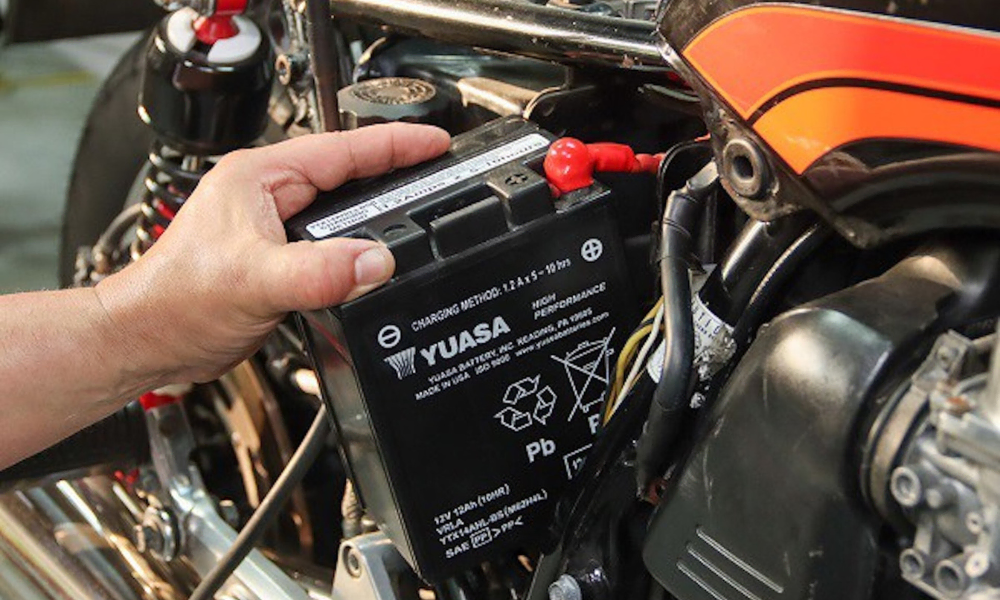
Step One: Know What Your Bike Needs (RTFM)
Seriously, grab your owner’s manual and read it. That’s where the truth lives. You’ll need to match:
- Size and Shape – Batteries are grouped by size codes. If it doesn’t fit in your tray, you’ve got a problem. Foam can help fill small gaps, especially with smaller lithium units, but the core dimensions need to line up.
- Terminal Type and Polarity – Are the posts flat, round, or L-shaped? Positive on the left or the right? Get this wrong and your cables won’t reach.
- Minimum CCA Rating – That’s your Cold Cranking Amps. You can go higher, but never go lower than the manual says.
- Minimum Ah Rating – Some bikes, especially those with extra electronics, need a specific Amp Hour rating. That’s about how long the battery can supply juice.
Match the Battery Type to How You Ride
- Conventional – Old-school. Cheap, but you’ve got to maintain it. Not sealed. Good for vintage bikes or tight budgets.
- AGM – Sealed, no-maintenance, good vibration resistance. Great all-around choice for most street and touring setups.
- Lithium (LiFePO4) – Light as hell, strong cranking power, long life if treated right. Needs a specific charger and doesn’t love extreme cold.
What Is CCA, and Why Should You Care?
Cold Cranking Amps (CCA) = how hard your battery can punch when starting your bike in cold weather. Bigger engines, higher compression, or colder climates? You want a higher CCA. Never go under what your bike calls for. Going higher is usually fine, as long as it still fits.
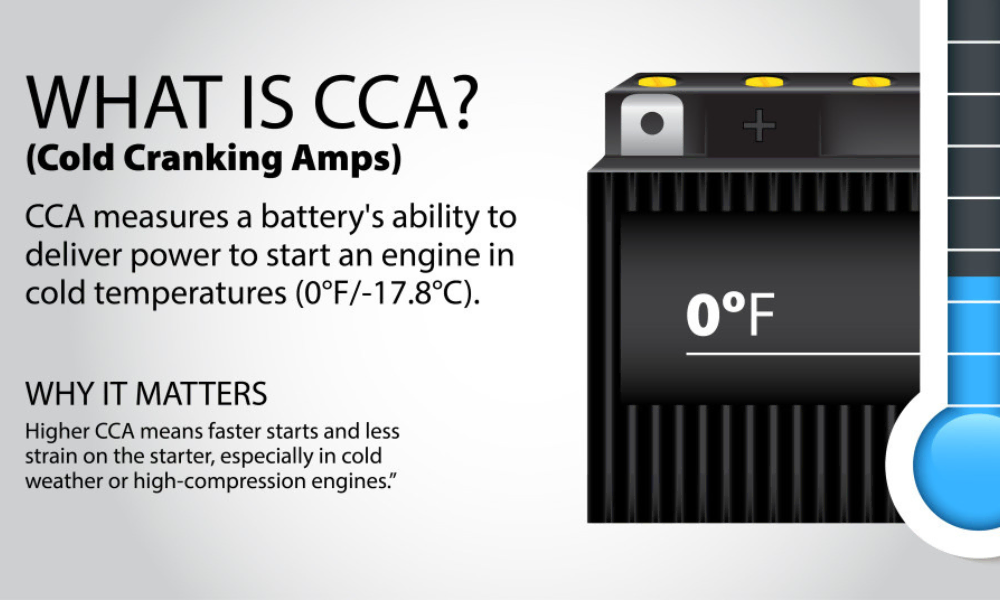
What About Amp Hours (Ah)?
Amp Hours = how long your battery can hold and supply power. If you’re running heated gear, lights, GPS, or a stereo while parked, Ah matters. But if all you care about is starting the bike, CCA is the main number to watch. Lithium batteries often have lower Ah ratings than lead-acid ones, but they’re more efficient with that power. Don’t try to compare Ah across types, it’s not a 1:1 thing.
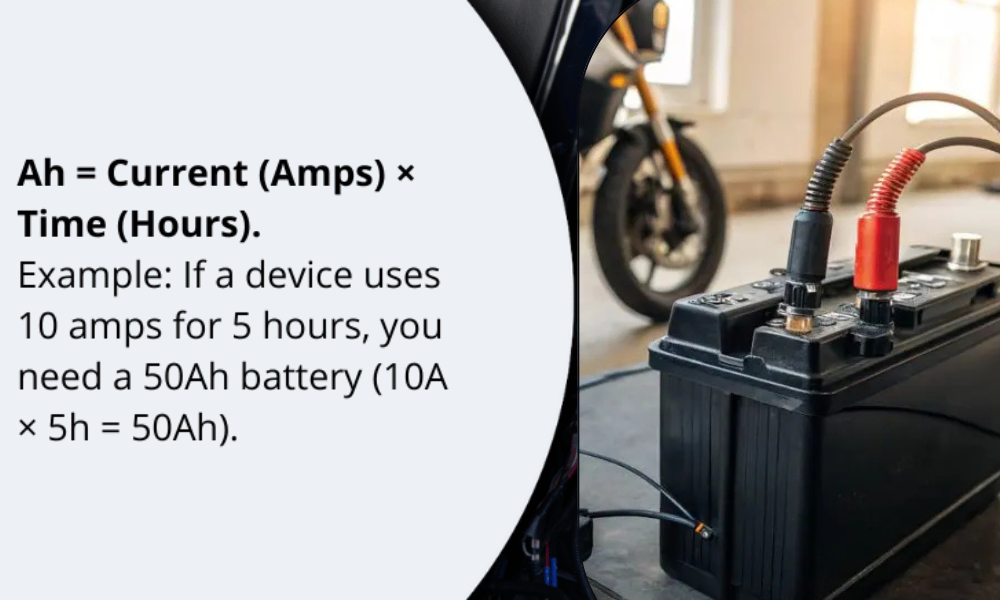
Quick Note on Fitment
Before you pull the trigger, double-check the fitment tab on Revzilla. Make sure the battery actually fits your bike’s year, make, and model. Don’t trust just the size specs. Fitment tools exist for a reason, and using them saves you from finding out the hard way when the terminals are flipped or the case doesn’t drop into the tray right.
Maintenance and Charging
- Conventional – Needs filling, charging, and regular top-offs with distilled water. Use a standard lead-acid charger.
- AGM – Maintenance-free. Use a smart charger that supports AGM. Avoid old trickle chargers.
- Lithium – Absolutely must use a lithium-specific charger. A lead-acid charger with desulfation mode can kill it. Don’t mess this up.

Be Real About Your Budget
You can get a basic battery for under $50 or a high-end lithium for over $300. If you can stretch a little, AGM is a big upgrade from conventional without a huge price hike. You don’t always need the most expensive battery, but going too cheap can backfire fast.
Don’t Get Left Stranded
Your battery might not be the coolest thing on your bike, but it’s one of the most important. No power, no ride. It’s that simple.
Whether you’re going for a budget Fire Power, a reliable Yuasa or Twin Power AGM, or stepping into lightweight territory with Antigravity, Shorai, or NOCO, the goal is the same: get a battery that fits your bike, your ride style, and your expectations. Install it right, charge it right, and it’ll return the favor with years of solid starts.
Pick smart and stop stressing over dead batteries. You’ve got better places to be.
Related
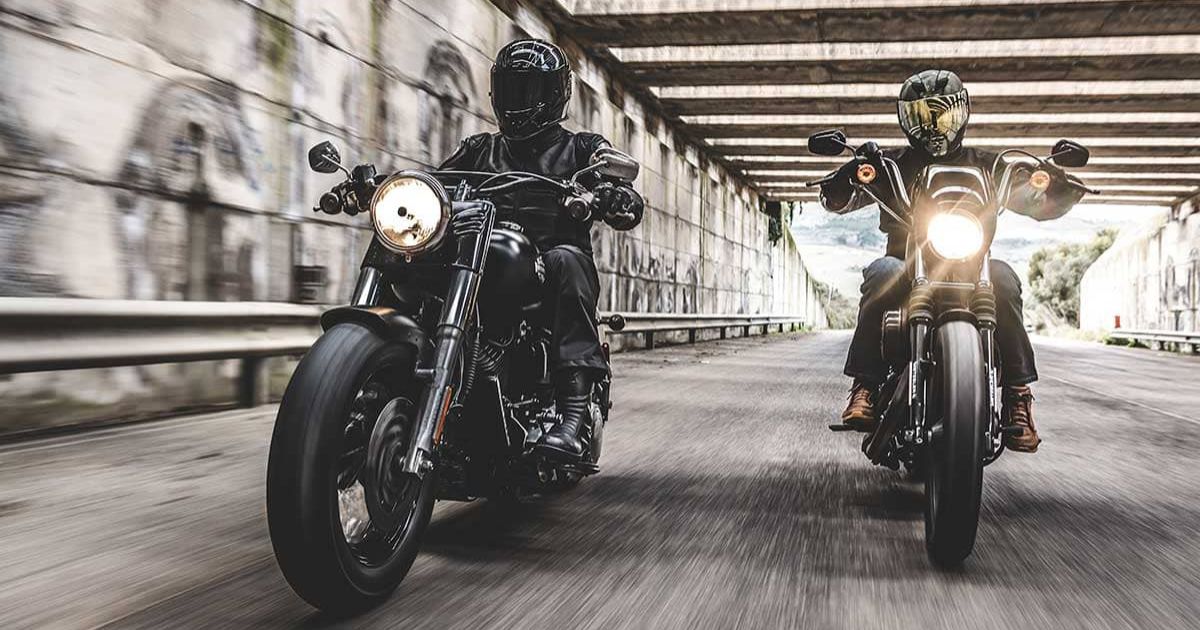
Best Cruiser Tires for Motorcycle Riders in 2025
Discover the best cruiser tires of 2025 for riders—tested for grip, comfort, mileage, and style to keep your V-Twin planted and confident.

